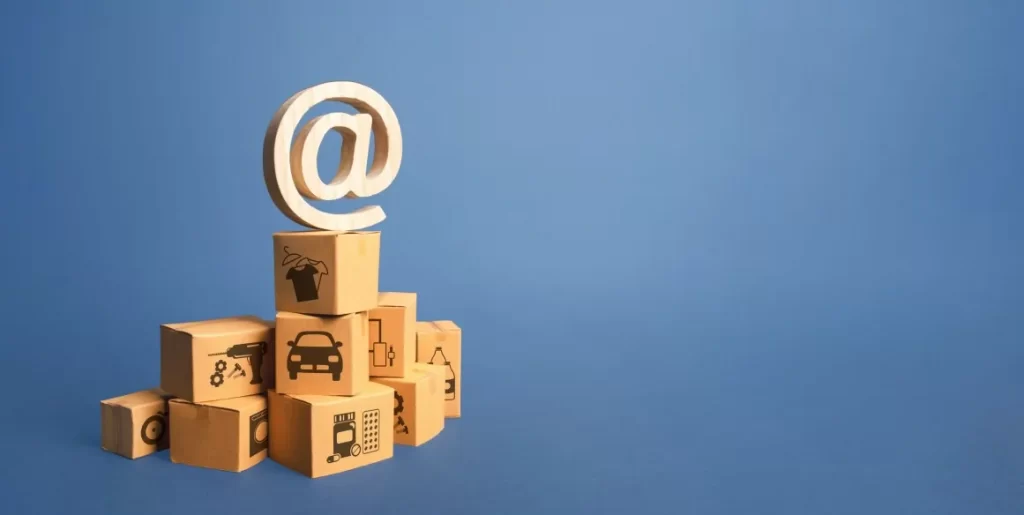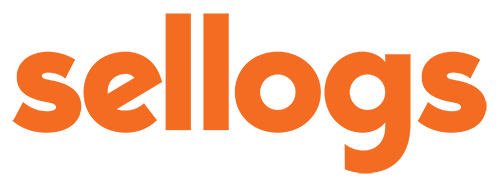Bread, Clothes, Shelter & Digitization in the Logistics Industry.

Social Media platforms of all hues are abuzz with Webinars, and Articles on the crying need for Automation through Digitization in the domain of Transportation, Warehousing & Distribution. There has been an entrepreneurial zeal around the opportunities of digitization in Logistics which has resulted in thousands of STARTUPS – 99.99% addressing the area of Technology Solutions for Logistics. Not getting into quoting news feeds that talks about the Billions of dollars raised in India and abroad for such ventures, we the older generation in this logistics business is happy to see the influx of smart PEOPLE, CAPITAL, and finally the acceptance of Logistics as the differentiator in business. Roti (Food), Kapda (Clothing)& Makan (Shelter) is the Indian version of the hierarchy of needs for a human being. Similarly, organizations also ascend these hierarchies based on their progress. While the co-existence between the Logistics Service User (LSU- Manufacturer) and the Logistics Service Provider (LSU – Forwarder) has crossed a century and has attained maturity in terms of meeting expectations, often these status quos are challenged by disruptive technology which promises better productivity. What history tells us is that Productivity enhancement tool adoption is done only when it provides business sense – reduction in cost or increase in, efficiency. First in the hierarchy of needs comes Roti – All things which are required for the LSP to breakeven and here tech tools are way down the list. Then Comes Kapada, the first step of sophistication – Like a transporter’s transition into a 3PL and here the tech tools are somewhere in the middle of the list. Finally, Makan, the established LSP stage where he moves from an Asset-Less to Asset-Lite to an Assetised Model. Here the tech tools feature at the top along with his Infra shopping list. However, the tech tools at this stage relate more to Financial & Process Control and he levels the playing field with the LSU in tech adoption by onboarding applications like SAP, Salesforce, Oracle, etc. The impact of two models covered by the Disruptors in Transportation and Logistics are discussed here for the brevity of this article, even though there are a host of other similarly important models where such tech-driven disruptive solutions have made their mark. AGGREGATION Transport Aggregators provide Platform-as-a-Solution for Air/Sea Freight, Road Transportation, etc. Mostly working on the Subscription model, most of them do not handhold transactions that are left to the entities who meet on the platform and get into the business. While the model holds great potential, the Users have to work with a clutch of these platforms to cover the whole market and modes. Each platform is a silo and the silos do not talk to each other and the silos do not talk to customer’s systems very often. The disruption promise was to break the silos and level the playing field for the customer. In a lighter vein, a lot of these tech platforms end up being dating sites for transporters and Customers. There is a need for the aggregators to address the Freight Management landscape to remain in business in the long run. VISIBILITY Imagine sending a courier to your friend. Today, you can get a blow by blow account of how the package moves along the execution chain of the LSP and finally gets signed off and you even get the name and photo sometimes of the person who has taken delivery. Compare this scenario when you send a consignment weighing tons across the border – What you normally get is an ocean of emails and a DSR in an excel sheet from the same LSP as “tracking”. For sure, Visibility is a challenge and we need solutions for the same. When the execution chain is through its own assets and modes, there is no visibility tool externally needed. When the execution chain of the shipment is through the third party as in Freight Forwarding, visibility tools are required for internal consumption and only filtered information goes to the customer making disruption a lesser reality. Visibility tools are highly recommended for the LSUs, but adoption is very little as the IT depts are not ready to fund these initiatives of Logistics visibility. In most cases, it is seen as the service liability of the LSU to provide the same. The initiative in LSU IT is to in-source all these functionalities in the ERP itself as an IT solution. None of these ERP solutions has an evolved Logistics module like their Financial or S&D modules. There are other models where a Tech invention creates an opportunity for new solutions like IoT, Conversational Systems, Big Data Analytics, ML, AI, etc. While Supply Chain is discussed as the biggest differentiator for businesses, the Supply Chain Execution process – LOGISTICS – is an Enterprise OUT function and outsourced. Most of the LSU tools lack Enterprise-wide Applications Integration and also lack External integrations with data sources. This makes those systems behave like form filling accountants providing no great disruptive value. Adoption of these tech tools will definitely be a reality as we go along as it will provide great value to enterprises. However, the enterprises first need to be ready with their operational systems to receive the benefits provided by these disruptive tech solutions. That brings us to the discussion on where is it that the Multi-Billion-Dollar funded tech tools for the Logistics Industry find relevance and create disruption. While speaking to my customers who are both LSU and LSP, these days I am keen to discuss the new-gen tools of disruption they are using. The standard response I get from the LSU is that it is up to the LSP to use all those because, in the end, they are responsible for the Safe and Timely transit of the shipment. The response from the LSPs is quite interesting. They are dabbling with some of these new-gen solutions for sure, but mostly as trophies on the wall as the entities are quite popular in social media and find immense
State of Logistics-Tech-Product-Startups What Bloomed, What Bombed and What will Bear-On AC (After Covid)

Let me confess before I begin – I have the entrepreneurial “itch” which brings me back very often to beginnings of some business multiple times in life. When I left a comfortable position in a promising logistics tech startup 2 decades back, the founder gave me a piece of splendid advice – “If you want to be an entrepreneur, you should be ready for a lower quality of life”. Since then, in the past 2 decades, I have lived in the midst of Logistics Tech from the time we built the first netcentric ERP for Logistics Service Providers in 2002. Many Logistics Tech Startups have come, gone, and also stayed anchored with their business models which appealed to the user and made a positive change to his businesses. We will focus our discussion in this article to the Transactional, Decision Support, and Tech Leveraged Solutions in Logistics which made their appearance in business in the past decade. “You can only do so many things great, and you should cast aside everything else.” ~ Tim Cook, CEO of Apple and made the Apple Supply Chain what it is today. This is absolutely true when you analyze the trend in Logistics-Tech-Startups. 99% of these initiatives have focussed on their area of core competence, the background they came from, and the stream of specialization in logistics they focussed. We can segregate the startups whose founders are those who came from the Logistics (Sales, Consulting, Operations) Domain whom I would tag as DOERS and the Young breed of tech-savvy Ivy league Alumni who made their mark by building high valuation Entreprises – whom I would tag as DARERS. DOERS: People who came from the Ocean Carrier industry, built Demand Aggregation for Carriers. People who came from the Freight Forwarder background (All Modes) built Freight Exchanges, which morphed into Freight Aggregators and which is again morphing into Freight Sourcing Platforms. Who came from Warehousing background built Productivity tools for warehouses and Warehouse demand aggregation. Truck aggregators, Uberisation of Small trucks, Reverse Auction platforms, Freight Audit Platforms – Mostly those are EXECUTION in nature and TRANSACTIONAL in form and which reduces the effort of the operator or provides reduction of cost and increase in efficiency when applied. DARERS: In this segment of Founders, it is not the years of experience but the knowledge of technology and its application on some of the case studies in the Logistics Execution process which has helped them to create businesses around it. Mostly, they are either TRANSACTIONAL – TMS, FMS, WMS, or some elements of ERP interventions. Or They are more ANALYTICAL solutions catering to areas of Planning, Optimisation, Business Intelligence, Control Towers, IoT, Predictive Analytics, BlockChain ……. and the list can be really long. The solutions are aspirational – most of the solutions wanted to solve the problem of the world in Logistics and they took the best of tech and threw it on the Real-world problems of Logistics and came out with their version of solutions. The world of Tech Solutions in Logistics has grown and excelled. The investor community is quick to jump on any opportunity in such solutions segments – because they believe that the future is Supply Chain. Brilliant minds have woven exceptional solutions to specific problems and have built several siloed fields (read minefields) of solutions for the SERVICE USER (The One who pays for the Freight and Services). It is very pertinent to see WHY the service user is not waiting at the gates on a Black Friday to buy these solutions off the shelf and implement them. Maybe an old quote about Logisticians sums up the reason for us: My logisticians are a humorless lot … they know if my campaign fails, they are the first ones I will slay. Alexander-The-Great Well, this is true. Anyone who has served in that hot seat in an FMCG, Heavy Engineering, ECOM, Critical Care Pharma…etc will tell you that the above quote is not out of context. In my 3 decades of learning, talking, and teaching logistics, I would have spoken to a lot of Supply Chain Leaders from the Service User segment. All of them depend on their ERPs and MS Excels when they go to war every day to deliver their goals. They have proven techniques of how to use them and articulate them. They have won many Pay rises with these techniques. If you need them to change their technique, you need to get into their shoes and understand the fact that – You cannot be like the 5 blind men who touched an Elephant and described it as a tree trunk, tube, and a big tub. You need to open your eyes and see the Elephant as a whole.The Whole is Greater than the sum of the parts in Logistics Execution. So to see WHAT BLOOMED – All Applications, Solutions, and technology which offered “OWNERSHIP” of getting the outcome and delivering it. Digital Forwarding – Grew multiples in a short span of 3 years. It forced all traditional forwarders to adapt and follow. Digital forwarding brings speed and predictability to the job of a forwarder. It may, at times help to control costs. Return Load Optimisation, Reverse Auction Platforms, and Uber Models in Trucking – The Oldest case study in digitalization in the Logistics business. Brings Cost down, Sweats the asset more, gives more CHOICE to be buyer, offers QUICK turnaround of truck placement and the list goes on. These platforms have grown multiple times. Transaction Visibility APIs – Grew multi-fold. The solutions which offered synchronized tracking of a moving asset (Remote Asset Tracking), Visibility tracking of Cargo with APIs along the way of transit, Predictive ETA services, On-demand Location services. Slowly, this availability of on-demand data is becoming an addictive service to the Service User. Managed Services for Planning and BI. Services like Demand Planning, Supply Planning, S&OP support services, Control Towers, Freight Audits, et. The adoption is still at the Top 5% of the customer base. As technology becomes


















